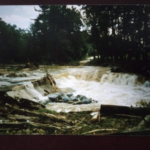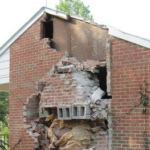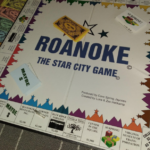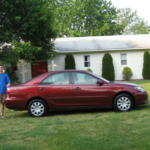Virginia’s Earth-shaking Events
This August marked the 10th anniversary of a rather striking Virginia occurrence. On the morning of August 23, 2011, I was having a conversation with a coworker at my desk when a rumbling noise began – it sounded a lot like an air conditioning unit starting up. Rather than dying down, however, the rumble increased in volume and intensity until we could feel the whole room shaking. My coworker and I stopped talking, stared at each other, and then he said, “We’re having an earthquake!” At which we, along with most of the other people in our office building, bolted for the door. (Bad move, but Virginians don’t usually have a reason to practice proper earthquake protocol.) Outside, we watched from a safe distance as the radio tower on the top of our building rocked precariously back and forth, and then we all tried to call spouses and family members – unsuccessfully, since the entire local cell phone network promptly went down as it was inundated with people attempting to reach someone else.
While no deaths and only minor injuries occurred, this magnitude 5.8 earthquake was still something of a shock to many Virginians (pun intended). Near the epicenter in Mineral (northwest of Richmond), there was significant damage done to some homes. The quake – the largest to occur on the East Coast in 100 years – was felt widely across the region, by approximately one third of the US population, and minor damage was reported as far away as Charleston, S.C. The quake also caused enough damage to the Washington Monument to keep it closed for three subsequent years.
Who’d have thought? Apparently there is a thing called the “Central Virginia Seismic Zone,” in which minor seismic activity has been recorded for the past 250 years. An interesting fact I learned afterwards is that, while the West Coast clearly has the market cornered on big earthquakes (and they’re welcome to keep it that way!), earthquakes on the East Coast can be felt more widely because the makeup of the earth’s crust over here is more efficient at transmitting seismic waves. I knew my sense of East Coast superiority was well-grounded. (Pun intended again.)
Another strange coincidence: just about one year ago, on the morning of August 9, 2020, I was lounging in bed when I felt what seemed vaguely like a gust of wind: I felt the house rattle, but the trees weren’t blowing. My first thought was, what are the kids doing? Upon further investigation, I soon realized we had experienced a minor earthquake – smaller than the one ten years ago, but strong enough to damage many structures around its epicenter in Sparta, NC. That one was the biggest seismic event in North Carolina in decades, and the biggest on the East Coast since the 2011 event.
What are the takeaways? Probably not pride in our efficient East Coast crust. As we consider the recent devastation wrought in Haiti, with over 2,000 lives lost and 50,000 homes destroyed, we can indeed remind ourselves how blessed we are to live in a place with no major fault lines, active volcanoes, or routinely violent weather. But an even better response is to reach out and help the people who are suffering terribly in such places. Oh, and instead of taking too much for granted, it might be wise to learn proper earthquake protocol…
More from Tim Carr
- Virginia’s Native Allspice

- Wet and Wicked Weather in Western Virginia – Part 3

- Virginia’s Earth-shaking Events

- Roanoke – the Star City Game

- Saving the Planet, one Semi-Immortal Toyota at a time

- Chic(k) Lifestyle – Part 1
- Books to Read Aloud – Caddie Woodlawn

- 5 Random Items We No Longer Want To Do Without





